Woody and I resisted growing food crops for years because we could get great local, organic product at our Farmer’s Market and at local farms and specialty stores. We didn’t think we had time to be “farmers.”
We decided to venture into raised bed gardening last year with two beds and added two more this year. The original purpose was to grow enough basil to make the pounds of pesto that I make each holiday for our use and to give some as gifts. And, what the heck, throw in some tomatoes, oh, and some other herbs. Last year’s tomatoes were scrumptious and prolific, two plants, so this year we planted three. We also added zucchini, a pepper, eggplants, and Swiss chard. The Swiss chard was the first crop available for harvest and was awesome until about two weeks ago as it is waning now. We’ve been enjoying grilled zucchini, I made a few zucchini breads, and I made a batch of fritters for the first time, not bad. I grated a bunch more and froze it.
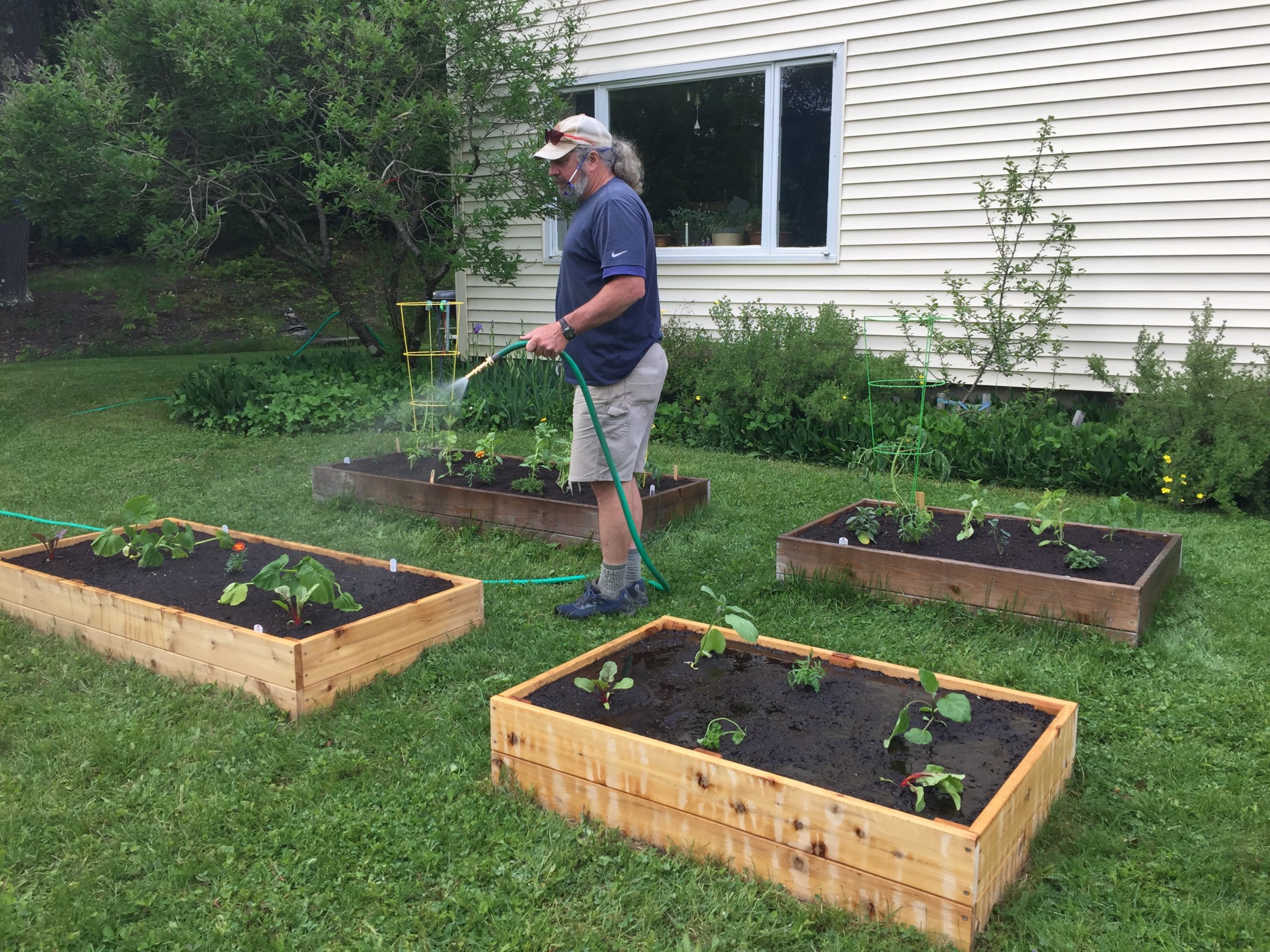
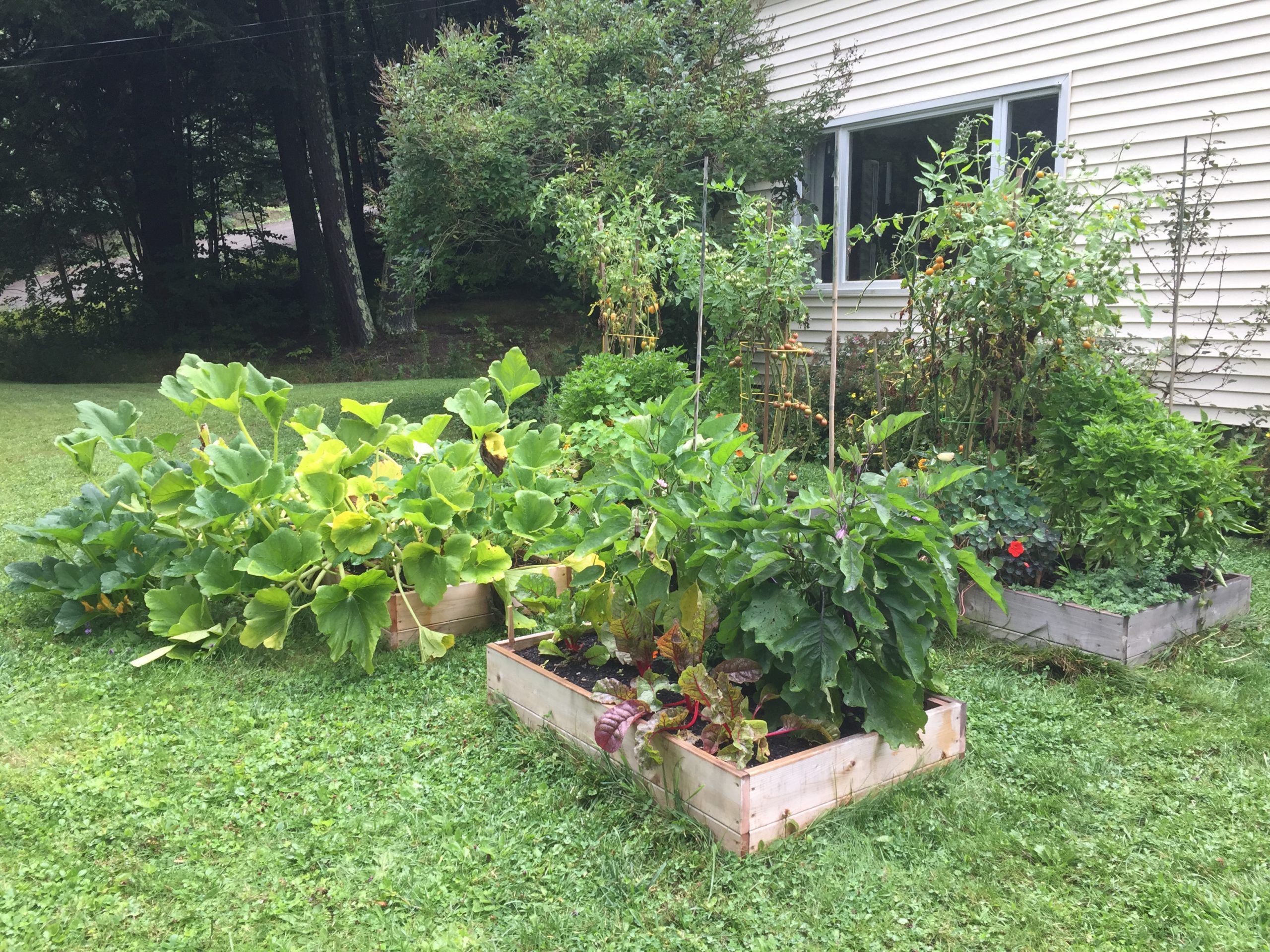
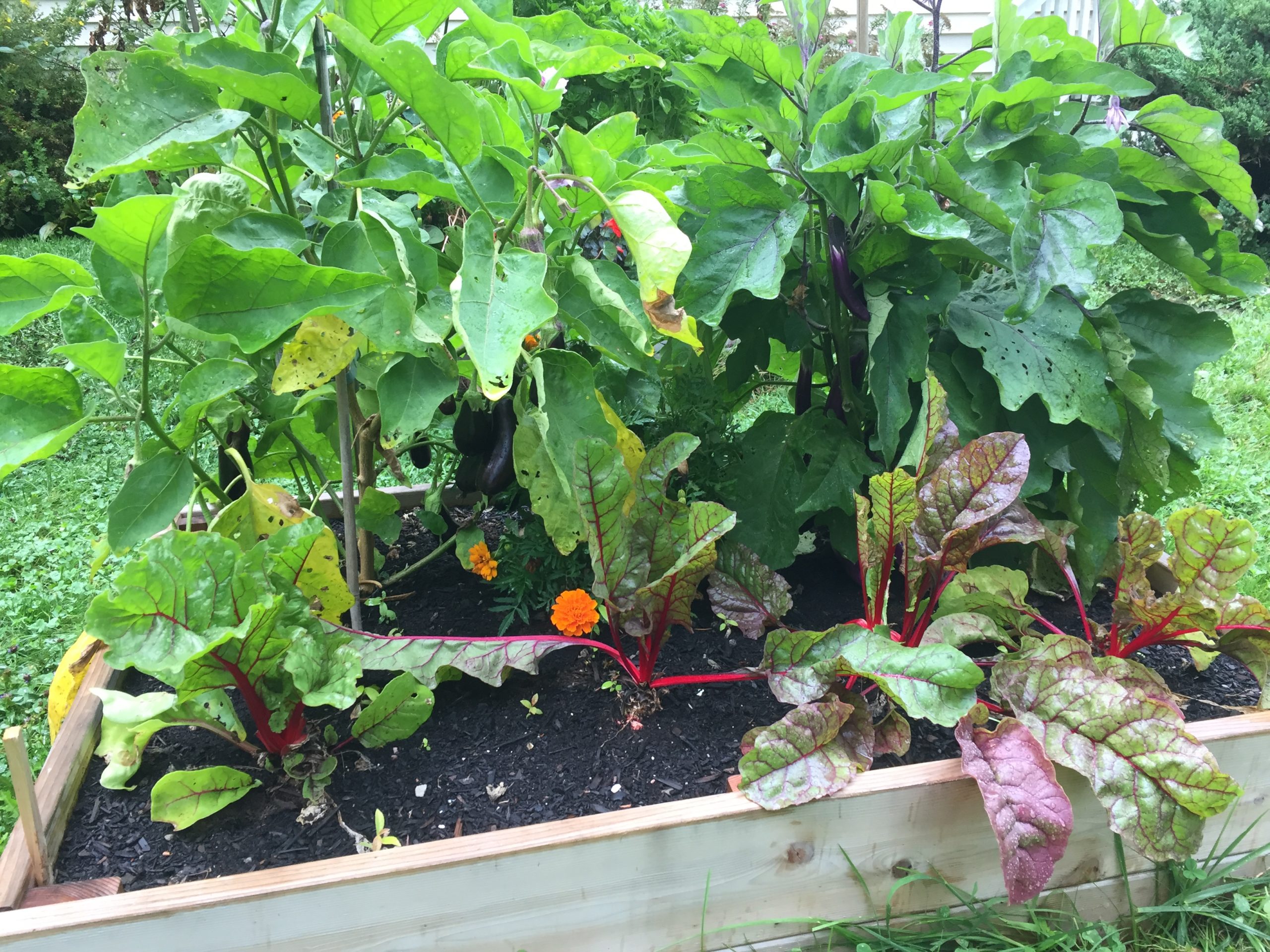
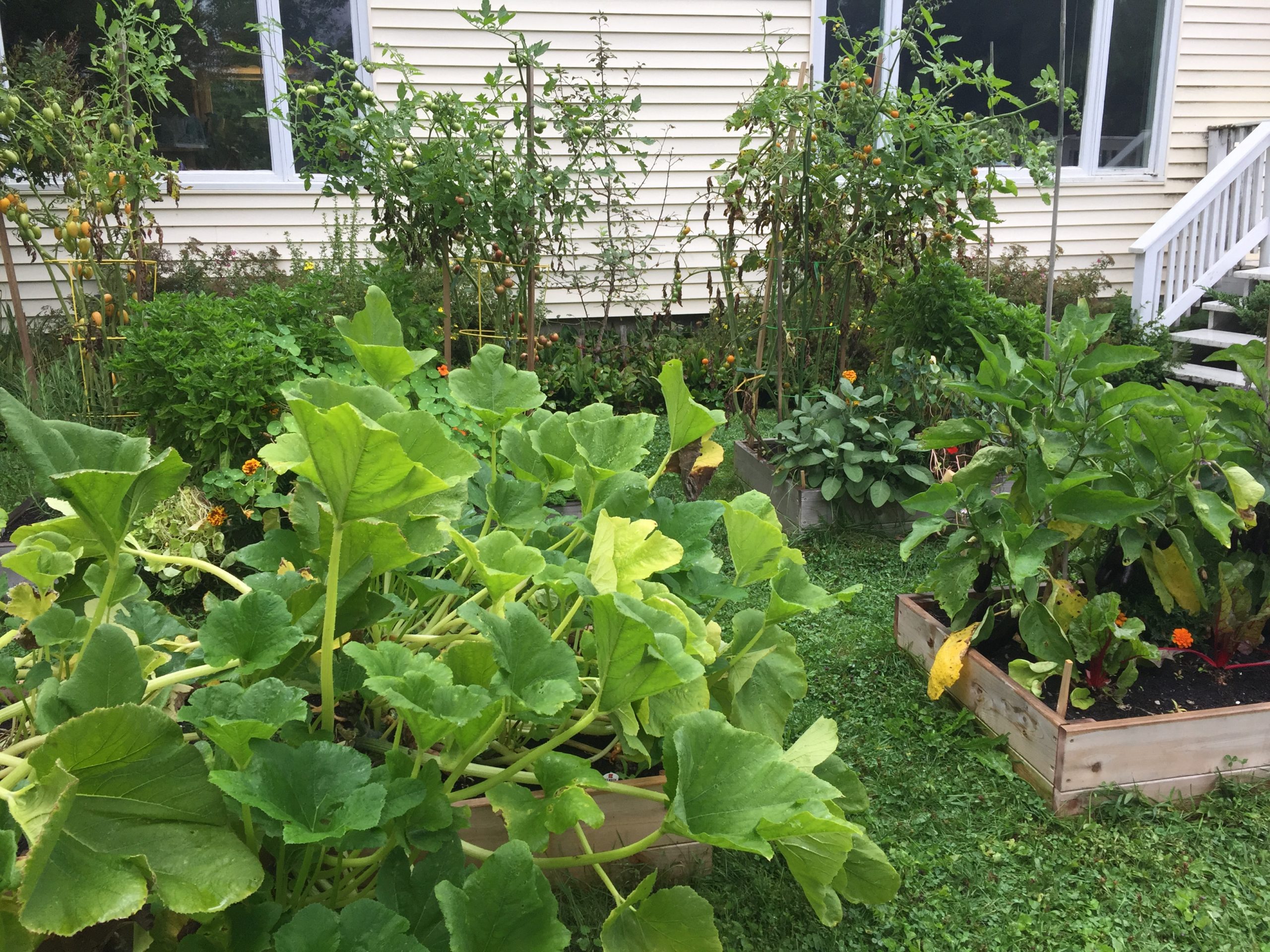
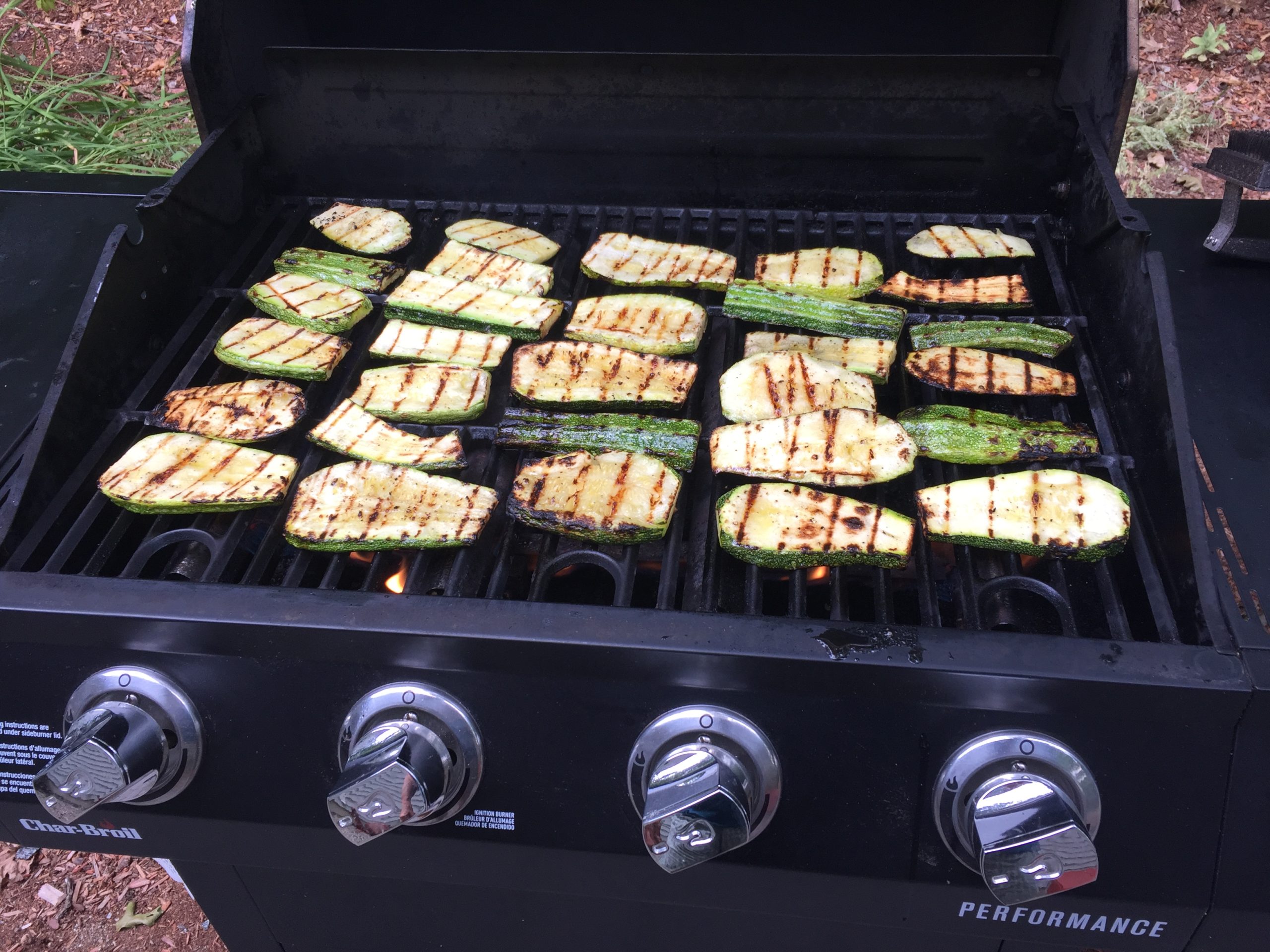
Being amongst the garden plants is therapeutic–nurturing them, arranging supports, pruning, deadheading. It does take time. And the yield is best when good attention is paid to watering.
You might now be asking “what does all this have to do with the title of this blog post?”
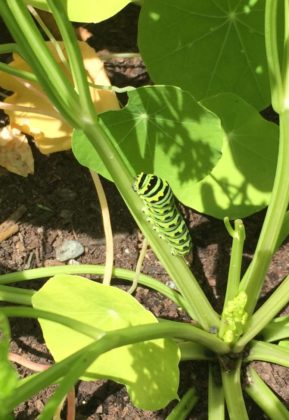
Knock on wood, we have been lucky that our crops have not been devoured by neighbors of the non-human kind considering that there is no fencing–but times they may be a-changin’. A week or two ago I saw little round poops on my nasturtium leaves. I remember having this happen on a potted indoor plant, so I looked around and above and found the culprit. I immediately thought tomato hornworn, but my friend Wendy said look it up, make sure, it could be a Monarch. After a bunch of research I determined it was a Swallowtail butterfly caterpillar, so then I spent a little more time putting it back. One of its three favorite garden plants is parsley and I was willing to sacrifice it. He high-tailed it across the lawn and into the strawberry leaves under the lilac. The next day, though, I found him in the parsley, changed my mind about sacrificing it, and put him back in the strawberries.
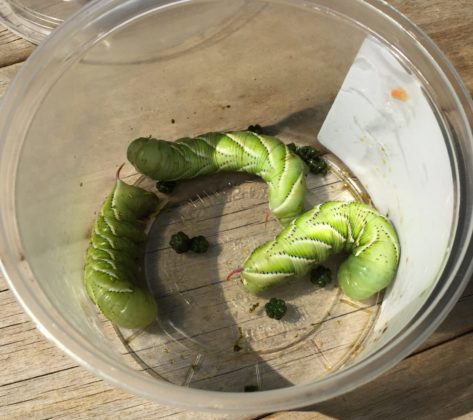
Now … the reason I’m writing is because yesterday, after returning from tennis and wanting a short visit to my garden, I saw more poops on my tomato leaves, then a green tomato with a hole in the side. It took me about ten minutes to find the assailant, and this time it was indeed the hornworm. It was huge! Amazing how they blend in and then when you find it you wonder how you could have missed it for so long. I didn’t want to touch it lest it squish all over me, and I did not learn in my previous research whether they bite or if the horn can cause pain. Further research alleviated that concern. This is a good resource: https://www.thespruce.com/identifying-and-controlling-tomato-hornworms-2539845. It takes a pretty good squeeze and pull to get it off the plant. I used a nasturtium leaf as my “glove.”
I checked the next plant–nothing. The third plant had poops, as did the sage below it, and a few on the adjacent basil. Once you follow the poop, look up higher. There were probably a dozen damaged tomatoes and I ended up finding two more hornworm. I thought it would be prudent to pick all of the damaged fruit and clean up all of the debris so I could continue to monitor without old evidence.
So much for an hour out of my workday. I did the same today and found one more. I learned from the above resource that it is actually a tobacco hornworm because it has seven white stripes (instead of eight) and a red horn.
There’s some backstory that goes along with this topic. My grandmother was quite the gardener, growing all kinds of crops, feeding the family fresh foods, and canning some of the excess. I was in her garden one day–can’t remember the reason. I came across a caterpillar on the tomato plant, brought it to her, and she said “yup, that’s them” like it was an alien.
We will continue to be “farmers.” It is rewarding although hardly cost-saving. Hundreds of dollars of wood and soil, fertilizer, plants. But, oh, the fruits of our labor!
Update 8/29/22: Woody coached me on actual cost savings. Thirty to fifty zucchinis, hundreds of tomatoes, a dozen Swiss chard meals saves us a lot of grocery money.

